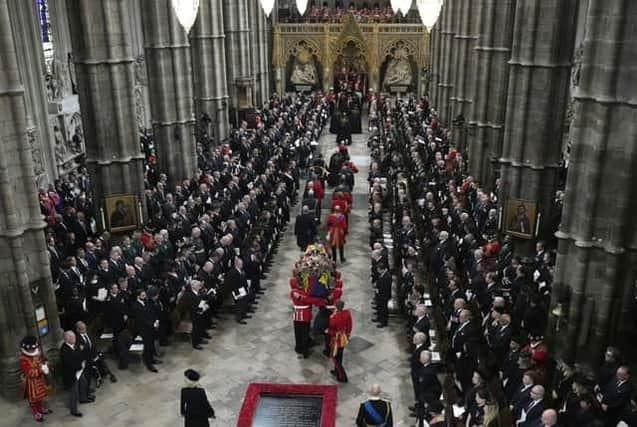What it was like to attend the Queen's state funeral inside Westminster Abbey


The funeral of Queen Elizabeth II was an unparalleled display of pomp and pageantry rooted in centuries of tradition.
But it was also intensely moving, featuring beautiful choral music and poignant personal touches.
Advertisement
Hide AdAdvertisement
Hide AdThe closing lament from the Queen’s Piper seemed like a fitting end to a remarkable life and a historic national moment.
It is often said that journalism provides a front-row seat to history. Rarely has this been more true. This was an event unlike any I will ever cover again, and I will never forget it.
The day started at 8am, when the doors of Westminster Abbey were opened.
Nearby roads had been closed and guests had to queue at Victoria Tower Gardens on the north bank of the River Thames.
Those in their smartest dark suits and dresses lined up beside religious leaders and straight-backed military types in uniforms adorned with medals.
I have never seen so many medals in one place, and doubt I will again.
There was a moment of panic the day before when the dress code, which I received by email on the train down to London, stipulated a morning coat or lounge suit for men.
What on earth was a lounge suit, and where was I going to get one in a matter of hours? To my relief, Google assured me it was just normal business attire.
Advertisement
Hide AdAdvertisement
Hide AdGuests had to pass through three layers of security, including airport-style scanners.
They were asked to bring two forms of identification and no hand luggage – a problem for travelling journalists lugging laptops and phone chargers around London.
They were also warned that the limited toilet facilities in Westminster Abbey were available between 8am and 10am but restricted during the service.
Police with guns were stationed along the route to the abbey. The army was also a visible presence, both in the immediate vicinity and further afield.
Journalists were seated in the north transept, under a striking stained glass window designed by the artist David Hockney to celebrate the Queen's reign.
Unveiled in 2018, it depicts a country scene in bright, primary colours and was sketched on the artist’s iPad.
Much like the monarchy, Westminster Abbey has moved with the times.
A television screen was provided so that reporters didn’t miss out on the parts of the ceremony their position made it difficult to see.
Advertisement
Hide AdAdvertisement
Hide AdThe sheer scale of the event was underlined by the guest list – a who’s who of the world’s most powerful and prominent.
But no matter who they were, they had never seen anything like this.
The silence that fell after the Last Post was sounded will live long in the memory, as will the beautiful choral singing, which rose and fell in exquisite harmonies.
The sound of that lone piper, too, will prove impossible to forget.
Westminster Abbey has witnessed centuries of history. It hangs in the air like dust, catching in the throat.
I feel privileged to have been present during this latest, remarkable, chapter.
Comments
Want to join the conversation? Please or to comment on this article.
